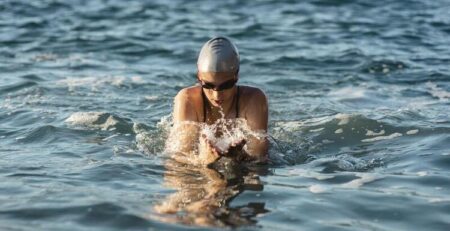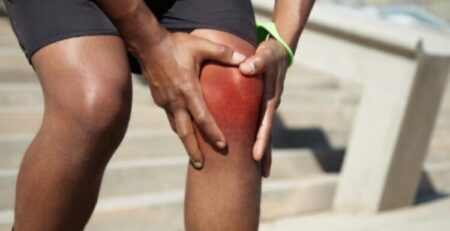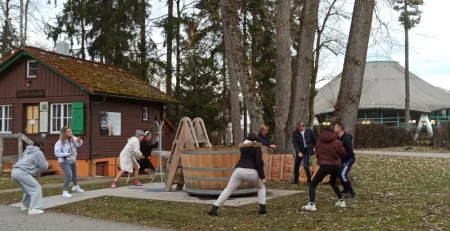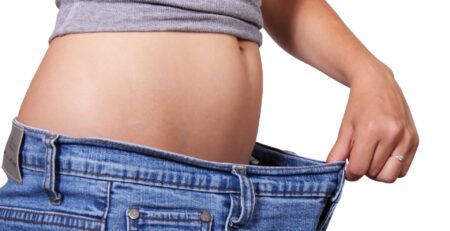Table of Contents
Cold plunging is currently more popular than ever, but it’s far from a new practice. Historical figures such as Charlemagne (747-814) and Johann Wolfgang von Goethe (1749-1832) are said to have practiced cold water immersion. Pastor Sebastian Kneipp also promoted cold water therapies, though at a milder water temperature of around 15 degrees.
In many regions, cold water swimming or plunging has a long tradition, and even children grow up with it. In Ukraine, Russia, and Belarus, the faithful of the Russian Orthodox Church wash away their sins with an ice bath.
Ice bathing is also very popular in Norway. Numerous bathing spots invite you to take a refreshing and healthy cold plunge in winter. There are even ice bathing clubs all over Norway, and tour operators also advertise them.

In Austria, the numerous mountain lakes are perfect for cold plunging. Here, too, many groups have now formed that regularly jump into the ice-cold water. Cold plunging is also very popular in Germany – the North Sea, Baltic Sea, Isar, Starnbergersee… Unfortunately, it is not quite so popular in the Ruhr region, as many lakes and bodies of water are located in nature reserves, but you can also put a small tub on your terrace or balcony and go ice bathing there.
I went cold water swimming for the first time 14 years ago. Back then, in the freezing cold North Sea on Sylt. Since then, I have never missed an opportunity to go into the cold water whenever possible. Then, last year, I attended a Wim Hof workshop with my son to refine my breathing technique or learn something new. Wim Hof teaches a form of holotropic breathing – fast, intense, and capable of triggering altered states and deep emotions. emotions.
A Good Breathing Technique Helps Regulate Hormones
A good breathing technique helps regulate hormones through the way we breathe. Breathing influences our blood pressure, heart rate, and autonomic nervous system. Breathing is not just about inhaling and exhaling air. Breathing is life, breathing is essential. We take many things that we do routinely every day for granted. We simply do them without thinking about how we do them. Yet breathing really is so incredibly important for the whole body.
We do not breathe to absorb oxygen, but primarily to release carbon dioxide. This is because oxygen can only be absorbed if carbon dioxide is released from our bodies. And only if there are enough red blood cells and iron in the blood can oxygen be transported properly through the body to the relevant organs.
Rapid Breathing Signals Stress to the Body
For the organism, rapid breathing is equivalent to chasing or being chased – running to survive, breathing to survive. Breathing hectically and too quickly also means that more cortisol is released. Cortisol is our stress and activity hormone; it is important for metabolism, for blood sugar regulation, and for the immune system. If more cortisol is needed, the body takes it from pregnenolone (pregnenolone-stealing syndrome) after a very short time in order to be able to stand firm. Pregnenolone is the mother of hormones, so to speak. We produce bile acid and cholesterol, and then pregnenolone, progesterone, cortisol, etc. are formed from these… If the formation of hormones reaches its capacity limits, it either taps into the upstream hormone or it gradually dries up so that the hormones fall.

Excess Cortisol Has Negative Consequences on the Body
Not only is the pregnenolone depleted, but the progesterone also begins to drop, forcing the development of oestrogen dominance. Increased cortisol has the disadvantage that a lot of water is stored under the skin, so you literally bloat. The hypothalamus and the pituitary gland are disturbed in their function, so that the thyroid gland is no longer activated, as the TSH is lowered. This is quite unfavorable, as the adrenal glands are also controlled by the thyroid gland and by the T3 produced there through conversion from T4. The adrenal glands have quite a lot of T3 receptors and need to be woken up by the thyroid gland in the morning. If TSH is lowered by cortisol, the thyroid hormone measurement level no longer works. The low TSH signals that there is sufficient T4 and T3 and that nothing else needs to be produced. The thyroid hormones decrease, resulting in hypothyroidism. Hypothyroidism is already present even if FT4 and FT3 are within 10% of the normal range. A deficiency is therefore not only present when there is a minus sign in front of the measured value.
From Breathing to the Thyroid Gland – Everything Is Connected
The stress caused by respiratory stress in the body, the thyroid gland, and the adrenal glands promotes the production of pro-inflammatory cytokines, which also disrupt the function of the hypothalamus and the pituitary gland.
The release of cortisol is generally associated with the transfer of glucose from the cells into the blood. The aim of this is to generate energy. Energy that is theoretically intended to keep you running. The only problem is that you are not running fast, but simply breathing frantically because you are simply breathing incorrectly. This means that the sugar released from the cells cannot be burned while running and walking, but remains unused and causes various problems. The excess sugar is often stored as belly/hip fat so that it can be used in an emergency. Some of the excess sugar is also converted into triglycerides and LDL cholesterol, which increases the risk of developing pancreatitis or arteriosclerosis, with the risk of suffering a heart attack or stroke. The development of insulin resistance is massively accelerated, and thus also the development of diabetes, with all its facets.
If pregnenolone stealing leads to a progesterone deficiency, this disrupts the hormonal balance between progesterone and oestrogen. This results in oestrogen dominance. A distinction must be made here as to what type of oestrogen dominance is involved. Oestrogens can be within the norm and still be dominant. This is always the case when the progesterone has fallen and no longer matches the oestrogen in terms of quantity. It is comparable to a lentil soup that consists mainly of potatoes. The other type of oestrogen dominance occurs when there is actually far too much oestrogen. It then exceeds the norm. In the third type of oestrogen dominance, both hormones are in the minus range, but still do not match in terms of quantity. Three completely different therapeutic approaches. An oestrogen deficiency makes the lung tissue more vulnerable and increases the risk of developing asthma. An excess of oestrogen triggers the mast cell, which then releases more histamine. The histamine causes the tissue to swell, provokes inflammatory processes, and also promotes the development of asthma via this mechanism.
Breathing Well Matters for Everyday Health and Cold Plunging
If you constantly breathe incorrectly, you risk a lot. Thankfully, not everyone breathes hectically and quickly. But many people breathe in an uncoordinated manner, breathe too shallowly, not deep enough, or constantly breathe through their mouth. Not to mention those who snore at night and have breathing interruptions. This also changes the release of cortisol and poses an incredible number of health risks if nothing is done about it.
For the most part, we are only used to warmth, sitting in heated rooms, wearing thick clothes, wrapping ourselves in warm blankets in the evening, taking warm/hot showers… Cold has become an unbearable condition for many. Cold is poorly tolerated. Because we are only ever used to warmth, our bodies increasingly lose the ability to adapt to different temperatures. As a result, we find it difficult to leave our warm comfort zone and expose ourselves to the unloved cold.
The Benefits of Cold Plunging
Cold exposure through a cold plunge or cold water swimming has many benefits:
- The cold water during cold plunging causes the blood vessels to contract and the blood to constrict, which significantly improves blood flow to the internal organs.
- After cold plunging, the blood circulation in the blood vessels and skin is stimulated reflexively, thus increasing the elasticity of the blood vessels and skin.
- Due to the increased release of cytokines, the application of cold has an anti-inflammatory effect and a very positive effect on the immune system.
- Cold plunging also has a positive effect on hormones, neurotransmitters, and the thyroid gland. This releases more hormones for heat regulation and energy production. For this reason, bathing in ice water makes you alert, awake, and focused.
- Mitochondrial production is also stimulated, so that more energy is available in the long term. The vagus nerve is activated and strengthened, promoting long-term regeneration, calm, relaxation, balance, and stress regulation.
- The improved regeneration capacity also benefits athletes, as the muscles are much better supplied with blood, oxygen, nutrients, and amino acids, and lactic acid can be broken down.
What are the Contraindications for Cold Plunging?
However, there are also contraindications to cold plunging. Therefore, not everyone should practise cold plunging. Contradictions include:
- Graves’ disease or hyperthyroidism – cold increases thyroid activity, which can worsen symptoms.
- Fever – the body is already stressed, and cold immersion may add strain.
- Severe heart conditions – the cardiovascular stress of cold water can be dangerous.
As the thyroid gland is responsible for thermoregulation and increases TSH as soon as we are cold, people with hyperthyroidism can boost this even more. An increased TSH ensures that more of the thyroid hormone T4 is released to generate heat. In the case of hyperthyroidism, Graves’ disease, this can cause palpitations, cold sweats, trembling, and stress. For this reason, people with a poorly controlled, overactive thyroid should not practise cold plunges. It is probably self-explanatory why you should not take a cold plunge when you have a fever.
How to Get Started with Cold Plunging
- If you’re a beginner, start with cold showers. Ending your shower with cold water helps the body adapt. This has the advantage that the surrounding air does not feel as cold as after a warm shower.
- You can look for Kneipp facilities and tread water in cold water. This also prepares the body very well.
- If you don’t necessarily want to start with cold water, you can set the room temperature permanently (in winter) to 19-20 degrees.
- Spending more time outdoors in the cold really helps, too.
- A visit to a cold chamber would also be good preparation. However, the dry cold of the cold chambers feels completely different from the wet cold.

People who find it difficult to switch off, who find it difficult to focus, benefit very well from cold plunging. First of all, you have to concentrate on your breathing and, of course, on yourself. When you come into contact with cold water, you often lose your breath. Of course, you shouldn’t hold your breath while ice bathing. This is also the reason why preparatory breathing exercises are important. When you enter the water, your focus must be directly on breathing. The head has no time to worry about anything other than breathing.
Breathing is then under my own control, so that you are very much with yourself. We have often lost the feeling of “being with ourselves”, and cold plunging gives us the opportunity to regain and relearn this ability.
My conclusion
I strongly recommend ice swimming. You go beyond your personal limits, get to know yourself and your abilities in a new way, and learn to focus and tune out your surroundings. It’s a great experience, with a great feeling after ice bathing.
It is important that you never go into the water alone in public waters, especially if you are inexperienced. You should always have someone by your side to make sure that nothing happens to you. The shock of the unfamiliar cold can sometimes cause you to stumble or take your breath away. If you want to be on the safe side, I would always recommend attending a workshop at the beginning. There are many great, very empathetic Wim Hof instructors who offer workshops all over Germany, Austria, Poland, etc. I also offer workshops sporadically, but I am not a Wim Hof Instructor.
Alexandra Nau is a naturopath, 1st chairwoman of the Biochemical Association in Velbert-Neviges and has published a total of four books on the subject of holistic health. She has been interested in ice bathing, holistic health, breathing, hormones, the thyroid gland, mitochondria and pain treatment for many years.










